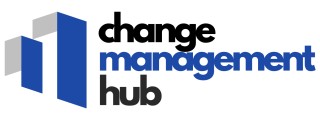
Understanding the Role of Risk Management in Change Management
Recognizing the Importance of Risk Management in Change Initiatives
In the realm of change management, the role of risk management is pivotal. It's the backbone that ensures transformation projects are steered clear of unforeseen challenges and disruptions. Within an organization, change initiatives often face a multitude of risks that can jeopardize their success. These can range from financial setbacks to operational disruptions and even resistance from personnel. Effective risk management is not just about mitigating potential hazards; it's about implementing a structured risk assessment process that supports informed decision making. For project managers, the ability to conduct a thorough risk analysis and leverage advanced management tools is crucial. This not only aids in identifying risks at an early stage but also empowers the formulation of a robust management plan. To effectively tackle risks in project management, one must understand that these risks aren't isolated— they intertwine with the overall project objectives. This understanding allows for a comprehensive assessment, ensuring every potential risk, whether operational or financial, is evaluated in the context of the larger business climate. Project managers often seek specialized training courses and certification to hone their skills in risk identification and mitigation. Equipped with the right training and management software, they can transform the project's risk profile from a potential threat into a manageable variable, aligning with both strategic goals and operational capabilities. Incorporating risk management into change processes is not a one-time activity. As the business environment continually evolves, so must the strategies used to manage risk. This dynamic approach helps organizations not only anticipate changes but also design strategies that foster resilience and sustainability. Learn more about enhancing your organization's change initiatives by crafting an effective resourcing strategy for change management.Identifying Potential Risks in Change Management
The Importance of Risk Identification in Change Management
In any change management initiative, pinpointing potential risks is a critical step for its success. The management process hinges on accurately identifying these risks to prepare effective countermeasures. Without a comprehensive understanding of what might occur during a change initiative, organizations may find themselves exposed to unforeseen challenges that could derail projects or impact the business negatively. Crafting an effective resourcing strategy for change management is integral to navigating these potential pitfalls.
Data and Analysis: Tools for Identifying Risks
Before launching a change initiative, a thorough risk assessment needs to be conducted. This involves leveraging data to forecast possible obstacles. Analyzing past project risks, reviewing financial records, and understanding operational workflows can provide insight into areas of vulnerability. Risk analysis tools and techniques, along with management software, assist in compiling and categorizing potential complications, allowing project managers to devise appropriate risk mitigation strategies.
Considering Operational and Financial Impact
When identifying risks, it is essential to evaluate both operational and financial impacts. The disruption of daily operations can lead to productivity declines and financial losses if not addressed early. Risk management tools should provide insights into these areas, aiding decision-making processes. The incorporation of advanced management tools not only highlights where risks lie but also assists in prioritizing them based on their potential impact on the organization's goals.
Utilizing Training and Certification for Risk Identification
Incorporating training courses and certifications for project managers can play a pivotal role in effective risk management. Training provides a deeper understanding of the management plan and enhances skills in risk identification. With knowledge of sophisticated software and techniques, managers are better equipped to handle uncertainties that may arise during a project.
Essential Risk Management Tools for Change Management
Tools and Techniques Crucial for Managing Change-Related Risks
In the landscape of change management, understanding the right tools and techniques is pivotal for effective risk mitigation. Organizations must equip themselves with a robust arsenal of strategies to navigate the uncertainties that may arise during change initiatives. Here, we delve into essential risk management tools and techniques that can significantly enhance the communication and management process.
- Risk Assessment Forms: These forms are essential for identifying potential project risks in the early stages. They provide a structured approach to evaluating both financial and operational risk factors by compiling crucial data.
- Risk Management Software: Advanced management software solutions facilitate comprehensive risk analysis and assessment, offering project managers detailed insights into project risks and how they might impact the organization.
- Decision-Making Frameworks: Integrating decision-making techniques within the risk management strategy can aid in determining the best course of action in response to identified risks. This often involves creating a decision matrix or a prioritized list of actions.
- Scenario Planning: This technique allows organizations to anticipate and prepare for potential risks by simulating different future scenarios and assessing their impact on the business.
- Regular Training Courses: Offering continuous training courses in risk management ensures that the project team and stakeholders are well-versed in recognizing and addressing project risks promptly.
- Certification Programs: Participation in certification programs can enhance the competency of individuals involved in the change management process, bolstering their ability to efficiently handle risk management tasks.
The integration of these tools and techniques assures a more comprehensive approach to risk management and lays the groundwork for successful change management projects. This proactive approach not only aids in risk identification and mitigation but also fosters a resilient environment within the organization, promoting sustainable growth and adaptability.
Implementing Risk Management Tools in Change Management
Step-by-step implementation process
Implementing risk management tools in change management involves a structured and comprehensive approach. Project managers need to integrate tools and techniques effectively into the existing management process to ensure the desired outcomes. The initial step calls for a detailed risk assessment. This involves gathering relevant data and conducting a thorough analysis to identify potential risks and their impact on the project.
Utilizing risk assessment and analysis
Risk assessment and analysis are fundamental to this process. Through these tools, organizations can determine the severity of potential risks and formulate a risk management plan that encompasses various aspects, including operational and financial risks. Utilizing management software can enhance the efficiency of this step, offering advanced risk analysis and risk identification capabilities that are crucial for large-scale projects.
Integrating tools and techniques effectively
Once risks are identified and assessed, project managers should employ specific risk management tools and techniques tailored to the organization's needs. Whether it's software for project risk tracking, tools for risk mitigation strategies, or training courses for team members, the selection and application of these tools demand careful consideration to align with the project's objectives. The use of effective risk management techniques also aids in decision making by providing clear insights into potential operational risks and their resolutions.
Monitoring and adjusting the management plan
After implementation, continuous monitoring of the risk management process is essential. As projects progress, new risks may emerge, necessitating adjustments to the management plan. Regular training for project managers and team members can aid in keeping the risk management strategy current and adaptable. Organizations should consider business certifications that reflect a commitment to ongoing improvement in risk management strategies.
Evaluating the Effectiveness of Risk Management Tools
Assessing the Success of Risk Management Applications
Once risk management tools are in place within an organization’s change management framework, it’s critical to regularly evaluate their effectiveness. This process is essential for ensuring that these tools are addressing the potential and actual risks effectively. By conducting regular assessments, project managers can determine whether the strategies implemented are in line with the organization’s goals or if adjustments are needed.
- Data Analysis: Regularly analyze the data collected from risk management tools. Look for trends or patterns that indicate which risks are frequently occurring or which parts of the management process might need improvement. This analysis should lead to actionable insights that can refine risk mitigation strategies.
- Feedback Mechanism: Implement a feedback loop that allows team members and stakeholders to report on the tools’ efficacy. Their firsthand experience, combined with data, can provide a complete picture of how well the risk management tools are performing.
- Risk Assessment Reviews: Conduct comprehensive risk assessment reviews periodically. These reviews should assess whether current tools and techniques effectively minimize operational, financial, and project risks as anticipated.
- Process Adaptation: Based on risk analysis and assessments, adjust the management process as needed. This might involve introducing new management tools, discarding ineffective ones, or fine-tuning existing techniques.
Evaluating the effectiveness of these applications involves continuous monitoring and readiness to adapt tools and processes when necessary. Every risk management tool and technique should contribute to an organized effort toward minimizing risks and enhancing organizational resilience against unforeseen challenges. This commitment to reviewing and enhancing tools will ultimately lead to a more robust and responsive risk management strategy, aligned with evolving business objectives.













